
The Dagwort Coombe Murder is a 1929 mystery detective novel by the Irish-born writer Lynn Brock. It was the first stand-alone novel by Brock following the success of his Golden age detective Colonel Gore. It was published in the United States with the alternative title The Stoke Silver Case.
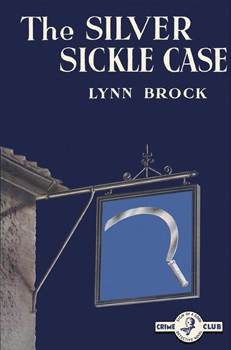
The Silver Sickle Case is a 1938 detective novel by the Irish-born writer Lynn Brock. Best known for his Colonel Gore series of mysteries, the novel introduced an alternative detective character Sergeant Venn of Scotland Yard assisted by Detective Constable Kither. It was followed by two sequels.

The Riddle of the Roost is a 1939 mystery detective novel by the Irish-born writer Lynn Brock. It was the third and last in his trilogy featuring the characters of Scotland Yard detective Sergeant Venn and Constable Kither. It was Brock's penultimate novel, followed the next year by The Stoat a final entry into the series of his best-known character Colonel Gore.
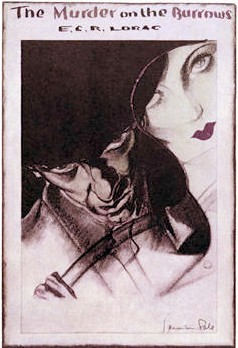
The Murder on the Burrows is a 1931 detective story by E.C.R. Lorac, the pen name of the British writer Edith Caroline Rivett. Her debut novel, it introduced the character of Chief Inspector MacDonald of Scotland Yard who went on to appear in a lengthy series of novels during the Golden Age of Detective Fiction. Although initially named James this is changed to Robert in later books. It takes place around Bideford Bay in North Devon where the author had spent several holidays.
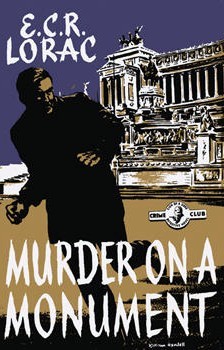
Murder on a Monument is a 1958 detective novel by E.C.R. Lorac, the pen name of the British writer Edith Caroline Rivett. It is the forty-fifth in her long-running series featuring Superintendent MacDonald of Scotland Yard, one of the more conventional detectives of the Golden Age of Detective Fiction. Along with Murder in Vienna, it was one of the rare ventures abroad for the series, which generally took place in London and rural England. It was the penultimate novel featuring MacDonald to be published during Lorac's lifetime.

Death of an Author is a 1935 detective novel by E.C.R. Lorac, the pen name of the British writer Edith Caroline Rivett. It is a rare standalone book by Lorac, not featuring Chief Inspector MacDonald of Scotland Yard who appeared in a lengthy series of novels during the Golden Age of Detective Fiction. It was her final novel published by Sampson Low before she switched to the more prestigious Collins Crime Club with whom she remained for the rest of her career.

Crime Counter Crime is a 1936 detective novel by E.C.R. Lorac, the pen name of the British writer Edith Caroline Rivett. It is the ninth in her long-running series featuring Chief Inspector MacDonald of Scotland Yard, a Golden Age detective who relies on standard police procedure to solve his cases. It was her first novel published by Collins Crime Club after switching from Sampson Low, partly on the success of the previous entry in the series The Organ Speaks. Collins then published the remainder the series.

Death in White Pyjamas is a 1944 detective novel by the British writer John Bude. It is a stand-alone novel and does not feature his regular character Superintendent Meredith. Although written during the Second World War, no reference is made to the ongoing conflict. Originally published by Cassell, in 2020 it was reissued by the British Library Publishing in a single edition with another Bude novel Death Knows No Calendar, as part of a series of republished crime novels from the Golden Age of Detective Fiction.

Lament for a Maker is a 1938 detective novel by the British writer Michael Innes. It is the third in his series featuring John Appleby, a young Detective Inspector in the Metropolitan Police. It was published during the Golden Age of Detective Fiction. The title refers to the Lament for the Makaris by the Scottish poet William Dunbar, which is constantly recited by one of the characters. The novel features a string of first person narratives of the events that takes place, which each character drawing a conclusion that builds on and also corrects the previous writer.

Stop Press is a 1939 mystery detective novel by the British writer Michael Innes. It is the fourth in his series featuring John Appleby Detective Inspector of Scotland Yard. It was written during the Golden Age of Detective Fiction and was first published by Victor Gollancz and in America by Dodd Mead under the alternative title The Spider Strikes. A country house mystery, it is the only novel in the series in which Appleby's sister Patricia appears.

Trouble A-Brewing is a 1946 detective novel by the British writer John Bude. Written during the Golden Age of Detective Fiction, it is part of his series featuring Detective Inspector Meredith.

For Murder Will Speak is a 1938 detective novel by the British author Alfred Walter Stewart, published under his pseudonym J.J. Connington. It is the thirteenth in a series of novels featuring the Golden Age Detective Chief Constable Sir Clinton Driffield. The title references a line from Shakespeare's Hamlet. It was released in the United States by Little, Brown and Company under the alternative title Murder Will Speak.

Mystery at Lynden Sands is a 1928 detective novel by the British author Alfred Walter Stewart, published under his pseudonym J.J. Connington. It is the third in a series of novels featuring the Golden Age Detective Chief Constable Sir Clinton Driffield. It was published in London by Gollancz and Boston by Little, Brown and Company. It received a generally positive critical reception, with one reviewer going so far as to say it "may just fail of being the best detective story of the century" comparing it to The Cask and The Mysterious Affair at Styles. In A Catalogue of Crime by Jacques Barzun and Wendell Hertig Taylor describe it as "early but not first-class Connington".

Tragedy at Ravensthorpe is an 1927 detective novel by the British writer Alfred Walter Stewart, published under his pseudonym J.J. Connington. It is the second in a series of seventeen novels featuring the Golden Age Detective Chief Constable Sir Clinton Driffield following on from Murder in the Maze. The American edition was published in Boston by Little, Brown and Company.
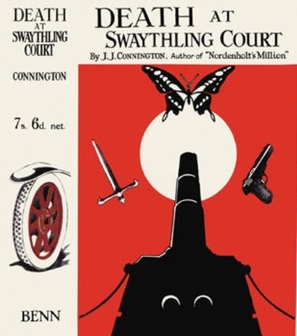
Death at Swaythling Court is a 1926 mystery detective novel by the British writer Alfred Walter Stewart, published under his pseudonym J.J. Connington. It was Stewart's first attempt at a detective novel, having previously produced works including the 1923 science fiction novel Nordenholt's Million. It is a stand-alone novel, revolving around a country house mystery. The following year the author published Murder in the Maze, the first of seventeen novels featuring the Golden Age detective Sir Clinton Driffield, for which he is best-known.

The Boathouse Riddle is a 1931 detective novel by the British author Alfred Walter Stewart, published under his pseudonym J.J. Connington. It is the sixth in his series of seventeen novels featuring the Golden Age Detective Chief Constable Sir Clinton Driffield. The title is also written as The Boat-House Riddle.

The Two Tickets Puzzle is a 1930 detective novel by the British author Alfred Walter Stewart, published under his pseudonym J.J. Connington. It was the second and last book featuring Superintendent Ross, an attempt to replace the author's better-known series character Sir Clinton Driffield who returned in Connington's next novel The Boathouse Riddle. With its story of a police detective trying to break down an alibi using railway timetables, it resembled the style of Freeman Wills Crofts' Inspector French series. Dorothy L. Sayers used a similar plot for her 1931 novel Five Red Herrings, and references Connington's novel in the dialogue.
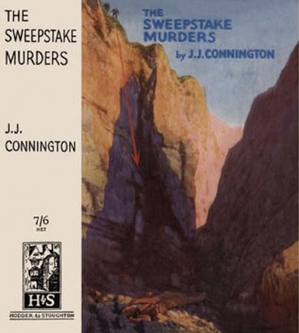
The Sweepstake Murders is an 1931 detective novel by the British author Alfred Walter Stewart, published under his pseudonym J.J. Connington. It is the seventh in his series of novels featuring the Golden Age Detective Chief Constable Sir Clinton Driffield. It uses a tontine murder theme, which recurs in detective and mystery stories.
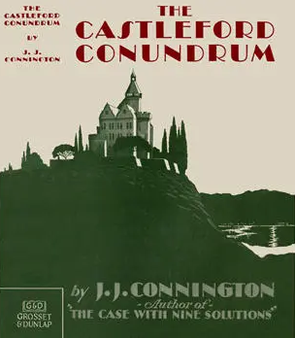
The Castleford Conundrum is a 1932 detective novel by the British author Alfred Walter Stewart, published under his pseudonym J.J. Connington. It is the eighth in his series of novels featuring the Golden Age Detective Chief Constable Sir Clinton Driffield, the Chief Constable of a rural English county.
Sir Clinton Driffield is a fictional police detective created by the British author J.J. Connington. He was one of numerous detectives created during the Golden Age of Detective Fiction, making his first appearance in Murder in the Maze in 1927. He appeared in four subsequent novels by 1929 when Connington apparently wished to write him out following Nemesis at Raynham Parva. However, his replacement Superintendent Ross failed to gain the same level of popularity over two novels and Sir Clinton returned in the 1931 mystery The Boathouse Riddle. He went on to appear in a further eleven novels. The last entry Common Sense Is All You Need was published the year of Connington's death in 1947 and is set in wartime Britain.



















